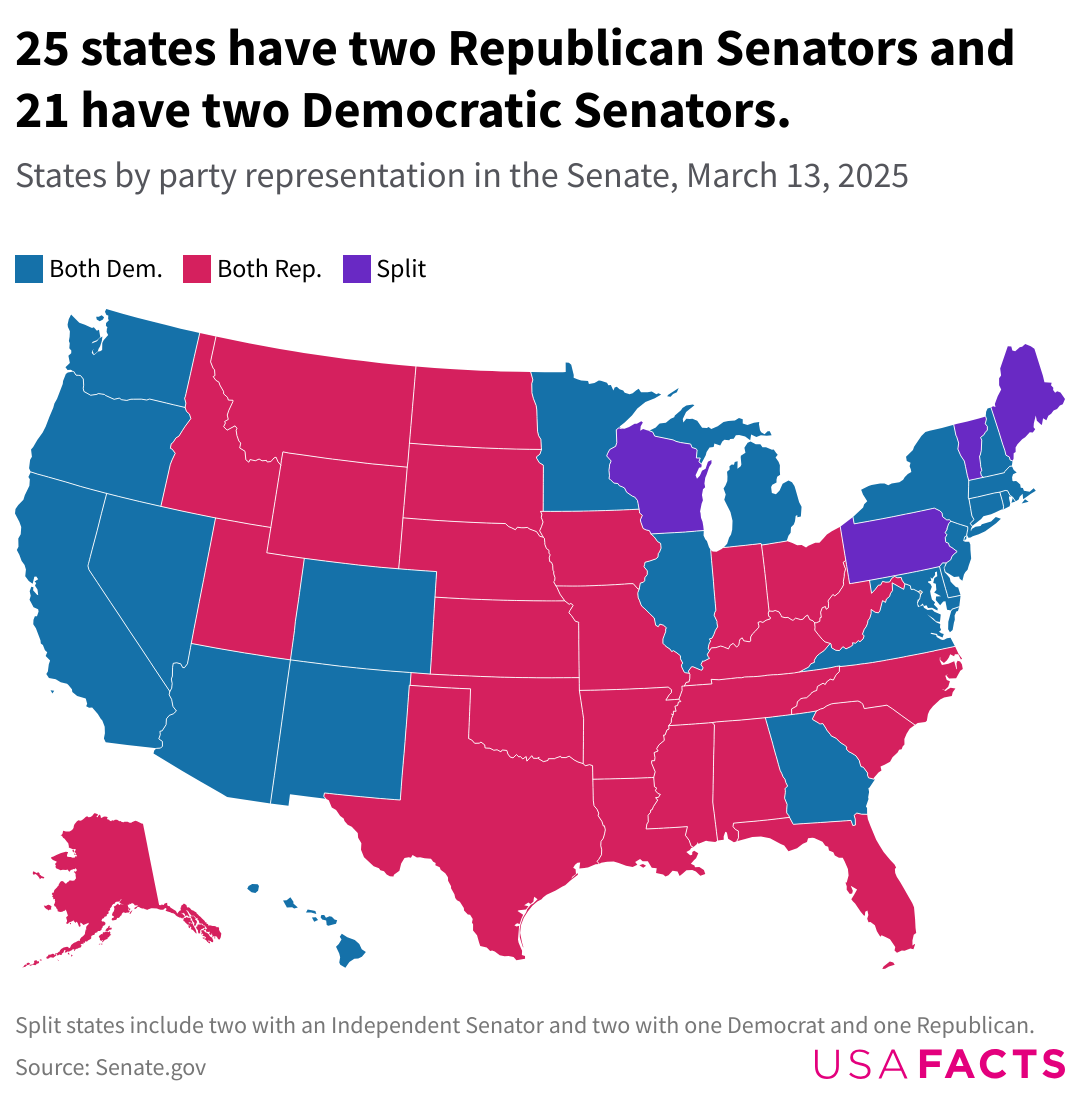How many states have split senate delegations?
Critical Analysis
Find answers to the following questions using the visual above, any links below, your big brain, and your knowledge of American government and politics:
Each state elects two Senators. A state’s senate delegation is comprised of the state’s two senators. Because Independent Senators in Maine and Vermont caucus with Democrats we will consider them Democrats. According to the visual above, besides Vermont and Maine, identify the two states that currently have a split senate delegation?
As of April 9, 2025, 25 states have a pair of Republican Senators, 21 states have a pair of Democratic Senators, and four have some combination of Republican, Democrat, and independent Senators. Why do you think the number of split senate delegations is so low?
In presidential elections, what do we call states like Pennsylvania and Wisconsin where party affiliation is very evenly matched?
Originally, Article I, section 3, of the U.S. Constitution stated that, "The Senate of the United States shall be composed of two Senators from each state, chosen by the legislature thereof for six Years; and each Senator shall have one Vote." This was changed in 1913 by the 17th Amendment. How do we currently pick U.S. Senators?
Why did we change to direct election of U.S. Senators?
The number of split Senate delegations has ratcheted downward since peaking at 27 in 1979-80. There were nine split Senate delegations in the 116th Congress, which tied the prior record low - and now Senate delegations are only truly split in 2 states. Why do you think that the number of split delegations is decreasing?
A student who we will call Philip claimed that the fact that only 2 delegations are split means that the country is more united than ever. Make a counter-claim to Philip’s pathetic argument.
Even though a state like California is very Democratic, of California’s 53 member U.S. House delegation (which includes the Speaker of the House and the House Minority leader) 11 members are Republicans. In other words, almost all House delegations are split. Although any state could have a split Senate delegation, what states cannot have a split House delegation?
A very famous TikTok influencer recently said, “Geography explains state’s split house delegations, and time explains state’s split senate delegations. Explain what this famous quote means.
Over recent years, several states have sent pairs of senators to Washington who were so ideologically disparate that their votes all but canceled each other out. Past examples include Minnesota’s Paul Wellstone and Rod Grams, North Carolina’s John Edwards and Jesse Helms, and California’s Alan Cranston and S.I. Hayakawa (each Democrat and Republican, respectively). A few years back, the Capitol Hill publication Roll Call took a look at some of the Senate’s “odd couples,” awarding the top spot to Wisconsin’s Ron Johnson, R, and Tammy Baldwin, D. Who is the Senate’s oddest couple today (remember, there are really only 2 states to chose from)?
Write and Discuss
Take ten minutes to write about the question at the top of the page and then discuss with your classmates.
Act on your Learning
Research how often the two members of your state’s U.S. Senate delegation vote together on legislation. Share your research in class.
Get Creative
If split senate delegations were an animal, what animal would they be?
Learning Extension*
Read this riveting, raunchy, and occasionally explicit Pew Research analysis of state senate delegations. (WARNING: May not be suitable for teens.)

